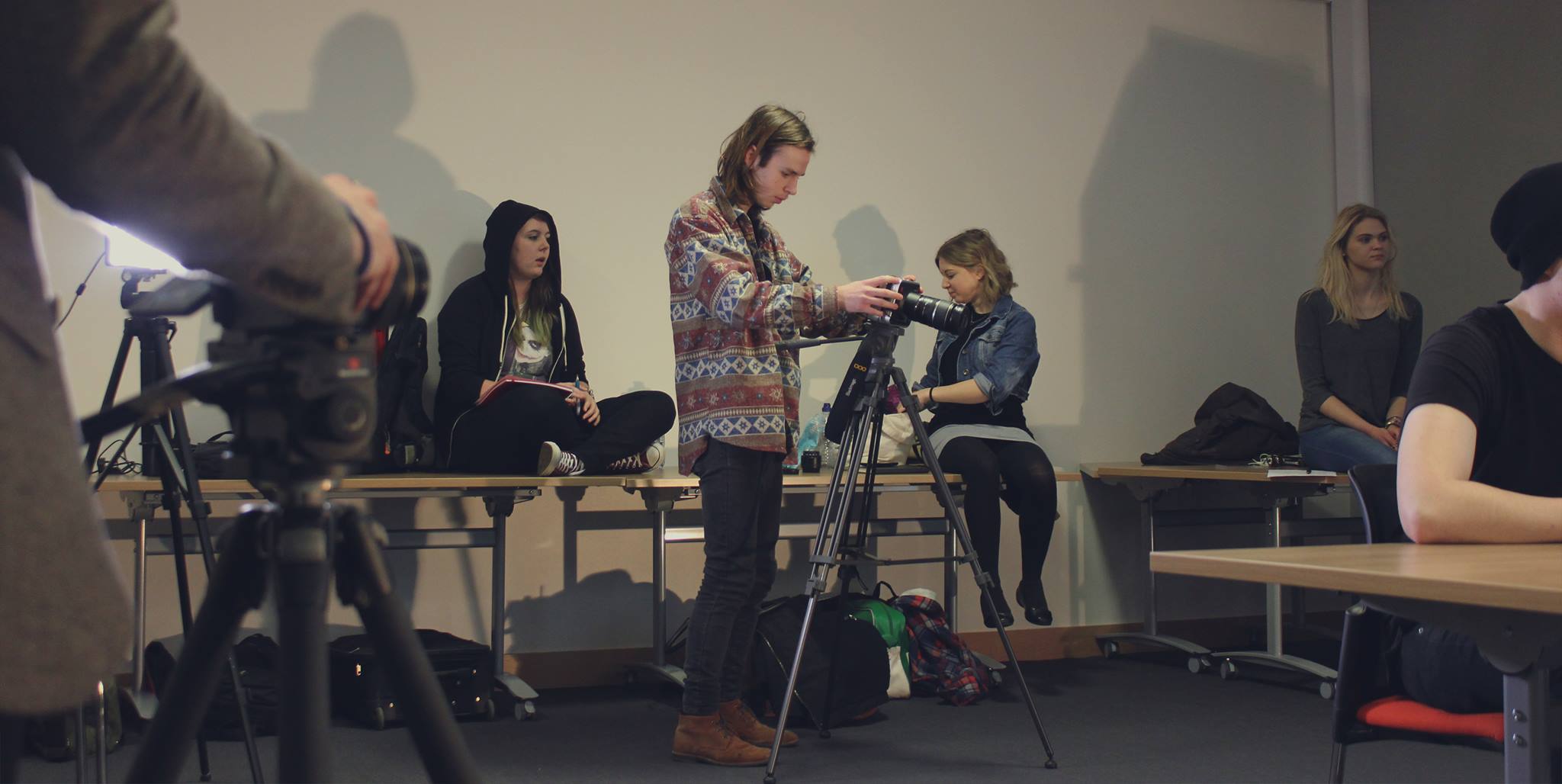The following is a transcript from this weeks tutorial video, for those who may have missed any information:
1) Create Movement
“A great way to to create visual depth, and to grab your audiences attention is to add movement. Carefully panning, tilting, and tracking at the appropriate pace will give your work a sleeker look. If you use a slider or dolly tracks and move toward a subject you will see the PARALLAX EFFECT. This is an optical phenomenon whereby, when you move your head (or a camera) things closer to you appear to move more than things further away. By tracking forward into a room, or beyond objects, toward a subject you can create a dramatic parallax effect, as foreground objects grow on camera much more than the subject and the room behind them. But just because you can add movement, doesn’t mean you always should. Show restraint, and don’t move the camera without a reason.”
2) Visit Locations
“Scouting locations before a shoot means you’ll be able to see which natural and artificial light sources already exist, as well as how the light falls and reacts at various times of day. This means you can decide where to place subjects, and equipment, before a shoot – saving time on the day, and allowing you to get inspired beforehand”
3) Avoid Handheld
“Use a tripod to stabilise shots. Nothing says amateur like shaky cam. When you move the camera, move it smoothly and with purpose. Decide before you move where you’re going to stop, and really concentrate on steady, unhurried movement. Don’t overuse the zoom, and if in doubt, don’t move.”
4) Don’t Use Digital Zoom
“If you do decide to zoom – a tool which I think rarely looks good – remember this… “Optical zoom, good. Digital zoom, bad”. If you were tricked into buying a camcorder because of some magical zoom number (like 800 times digital zoom!), DONT EVER USE IT! Not unless you like grainy, pixilated videos. Digital zoom is a big fake. As you increase zoom level, the camcorder crops further and further into the centre of the image, enlarging that cropped portion to fill the screen. As a result, videos look terrible. Stick with your cameras optical zoom which relies solely on the lens for magnification. You can usually turn off digital zoom in the camera menu. If you need to get closer to a subject, follow the old photographer’s maxim: ZOOM WITH YOUR FEET.”
5) Use Space Wisely
“When you’re composing a shot, bare in mind that there’s something called overscan in nearly every consumer TV. This is where it cuts off about 10% of the top, bottom and sides of every shot. Remember that while shooting. Always allow more space between a subject’s head and the top of the frame, and that will end up giving plenty of head room for viewers.
Also, experiment with this space for interesting compositions. Some of the best cinematographers in the world, like Christopher Doyle, use space around their subjects in unique and unforgettable ways.”
6) Know Your Lenses
“Let me start by saying, shallow depth of field is overused as a lazy way to make work look professional. Using deep focus (namely in wide and mid shots) not only allows directors to stage more intricately, but shows you actually have talent, (if you do it right). Knowing characteristics of lenses (and all your kit for that matter) will make all the difference on the day. A low millimetre lens (like an 18mm) will have a wide angle of view. A long millimetre lens (like a 200mm) will have a narrow angle of view. Learn how to use these tools to tell a story effectively.”
7) Choose a Point of Focus
“Drawing the viewers eye to a particular object, person, or section of the screen can be a powerful tool – especially when revealing a key piece of information. It happens in a matter of seconds without us even thinking about it. Where was your eye drawn to in this shot? Or this one? Using leading lines, contrasts in colour & light, you can choose (normally at the request of the director) exactly where you want an audience to look…even in a wide shot”
8) Frame with Objects
“To create a sense of depth, try placing your subject within an on screen frame. This is where you use objects or surroundings around the edge of the composition to help isolate the subject and draw attention to them as the point of interest. Look around where you are shooting for natural or man-made features that can serve as frames – like trees or doorways.
However, if you have horizontal or vertical lines in the frame (created by buildings for example), pay attention to how they appear within the frame. Horizontal lines should be level and vertical lines should be straight up and down. Remember, the framing element is meant to draw attention to a subject, not distract viewers by making them wish a line was straighter.”
9) Shoot Bright
“Cinematography is predominantly about lighting! Most lower price camcorders and DSLRs perform poorly in low light – producing grainy, washed-out shots that can’t be saved in post-production. The easiest way to overcome lighting issues is to shoot with more light and bring down the settings in your camera. Grain occurs if you shoot at a high ISO. So adding more light and bringing the ISO down will result in a crisper image. In particular, adding a light slightly behind a subject, just out of frame – referred to as a back-light – not only means additional light to work with, but also creates separation between your subject and background. Something which we’ll be covering in a later lighting tutorial.”
10) Dare to be Different!
“People follow rules because they’ve accepted them and fear to break them. In filmmaking there are many rules and guidelines, such as using the rule of thirds – which is when you align a subject along one of these guide lines or their intersection points – but I would argue it’s always important to try something new. SO BE BOLD!”
If you have any further questions, please don’t hesitate to contact us

